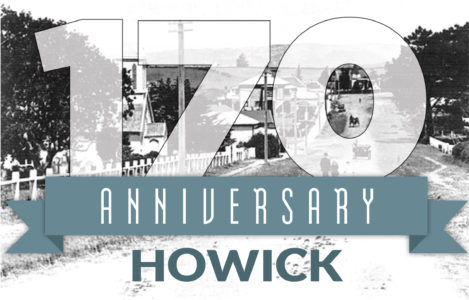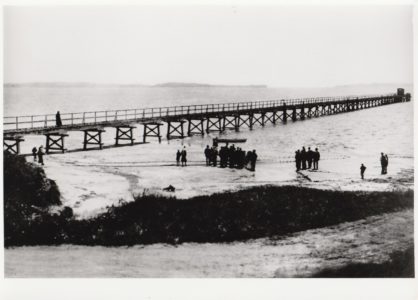
Local historian Alan La Roche continues his series marking the district’s 170th anniversary last year and the countdown to the 175th celebrations
When the Fencible settlers arrived in 1847 there was no wharf at Howick Beach and no road through Pakuranga, so the ferry service was the main means of getting to Auckland.
In 1854 there had been no major issues for the British 58th Regiment at Albert Barracks. They helped farmers harvest crops at two shillings and sixpence a day, upgrade roads and helped build a 50 foot long, high-tide only wharf at Howick Beach which cost up to 150 pounds on tea-tree piles with kauri decking.
Colour-Sergeant Robert Hattaway of the 58th Regiment helped with this work and met and married 17-year-old Maria, a Fencible’s daughter. He was discharged from the army and started a general store in Howick and they had 17 children.
A toll was charged for using this wharf of halfpenny per passenger and six pence per ton of goods. Public subscriptions were requested for its construction costs to supplement the 100 pounds grant from the Provincial Government.

Anglican Reverend Lush of Howick would not use the ferry but would walk or ride a horse as too many had drowned and boats had been destroyed near the beach.
Major Harris, a member of the House of Representatives in Seddon’s Government, used the Howick Wharf as a “political carrot” to ensure his election. Thomas McInness provided a dinner party at the Marine Hotel and said that Howick produce could be shipped to the busy Thames goldfields.
The Government would pay for an 800-foot wharf, seven feet wide. But to reach a depth for an all-tide wharf, Howick would need a 1400-feet long wharf. The poor Howick residents could not afford the extra length.
In 1896 the totara-piled wharf with kauri decking using local labour was opened.
The first vessel to use the wharf was the new paddle-steamer Britannia bringing excursionists.
If the seas were rough, as they often were, the ferry continued to Shelly Park Sandspit giving passengers a three mile walk back to Howick.
The Howick Wharf could only be used at high tide. Passengers were off-loaded by ship’s boat onto the reef covered in slippery seaweed and thick mud where long dresses or suits were ruined. Coins of that period are often found on the reef today left by those slipping-over.
Howick in 1896 had a population of 200 residents, three churches, two general stores but no chemist. Suddenly sections near the beach were popular instead of those near the shops.
Many Auckland churches, lodges, schools and sailing clubs came to Howick for picnics. The Bungalow homestead and the Cliffs were popular boarding houses near the beach.
Fishing and swimming off the wharf was prohibited.
Prime Minister Richard Seddon said the wharf in Howick “was a useless expenditure of public money”.
A fee of three pence was charged for using the baggage trolley and boats paid two shillings and sixpence to tie-up.
Anyone diving off the wharf in daylight hours could be fined up to five pounds.
When the wharf was demolished, the shed at the end of the wharf became the Howick Beach bus shelter.
In 1912, Crawford’s Buses started the first regular motorbus service to Auckland to supplement their horse-bus service.
Ferry services ceased in 1928 as the bus service was more comfortable and reliable. The wharf needed major repairs so was demolished in 1935. The Howick Sailing Club objected to the wharf dividing the beach in two making it dangerous for small yachts.
Today the remains of the piles can be seen at low tide.
Alan La Roche, Howick Historian










